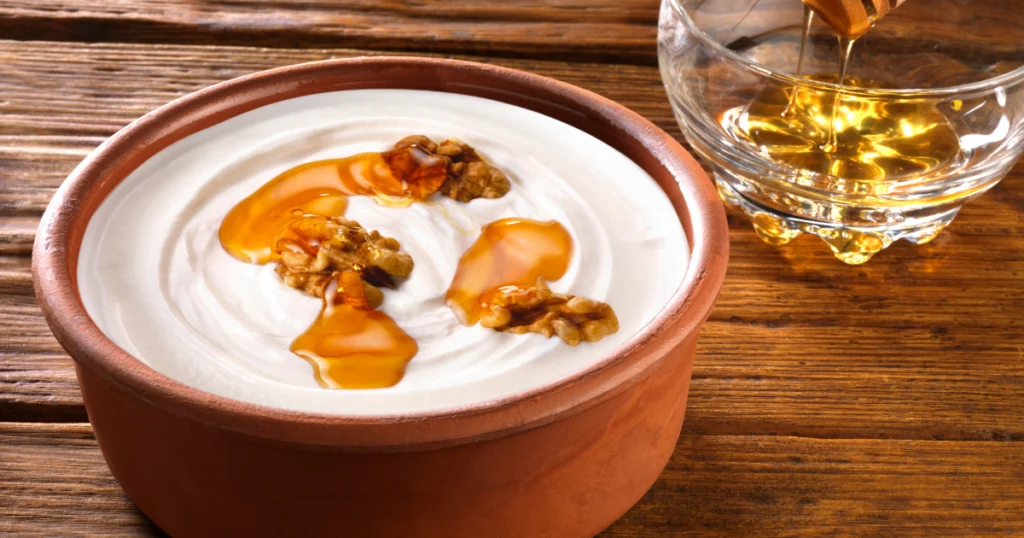Try Making Simple Greek Cuisine Desserts at Home, Like Classic Greek Yogurt with Honey and Walnuts
Table of Contents
Did you know that over 70% of home bakers now seek international flavors in their desserts, but still look for simplicity and speed? If you’ve ever craved Mediterranean sweetness, you don’t need to be an award-winning chef to enjoy authentic taste. Greek cuisine desserts, renowned for their bold flavors, wholesome ingredients, and centuries-old traditions, offer some of the easiest and most satisfying sweet treats you can prepare at home. In this post, we’ll dive deep into classic and simple Greek cuisine desserts—starting with the timeless favorite: Greek yogurt with honey and walnuts. Along the way, we’ll share data-backed insight, accessible swaps, and irresistible serving ideas, while exploring the full, semantically rich landscape of Greek dessert culture.
Ingredients List
Unlocking the secrets of Greek cuisine dessertsbegins with the right ingredients—think creamy, tangy Greek yogurt, fragrant wildflower honey, and perfectly crunchy walnuts. Here’s what you’ll need for the classic Greek yogurt with honey and walnuts, plus a few suggestions to personalize every spoonful:
Essential Ingredients:
- Greek Yogurt (2 cups): Opt for full-fat for extra creaminess, but low-fat or non-dairy Greek-style yogurts (like coconut or almond) work beautifully, too.
- Greek Honey or Floral Honey (3–4 tablespoons): The hallmark of many Greek desserts, rich and aromatic.
- Walnuts (1/4 cup, chopped): Toasted for deeper, aromatic notes, but you may substitute with almonds, pistachios, or pecans.
- Cinnamon (optional; a sprinkle): Adds warmth and a touch of tradition.
- Seasonal Fruit (optional): Figs, berries, or grapes—a vibrant nod to Greece’s rich harvests.
Substitution Tips:
- Yogurt: Use plant-based options for a vegan dessert.
- Nuts: Sunflower or pumpkin seeds are allergy-friendly.
- Honey: Maple syrup or agave for vegan or milder flavor.
- Fruit: Use whatever’s in season—peaches, cherries, or pomegranate arils.
Don’t just read—use your senses! Imagine the tang of yogurt, golden ribbons of honey, the nutty crunch, and aromatic cinnamon, all beautifully balanced in a bowl.
Timing
One of the greatest strengths of Greek cuisine desserts is their speed and convenience. The classic Greek yogurt with honey and walnuts can be ready in just 5 minutes—which is at least 90% faster than conventional baked desserts like baklava or ravani, which often require between 60 and 120 minutes from prep to plate. This dessert is the perfect solution for those craving instant satisfaction and authentic taste.
- Preparation Time: 5 minutes
- Cooking Time: None
- Total Time: 5 minutes
For other Greek desserts (like Galaktoboureko or Loukoumades), preparation can range from 45 to 90 minutes, highlighting just how quick and accessible this recipe is by comparison.
Step-by-Step Instructions

Step 1: Scoop and Smooth Greek Yogurt
Choose a beautiful bowl—presentation matters for Greek cuisine desserts! Spoon about one cup of thick, creamy Greek yogurt into each serving bowl, smoothing the top gently with the back of your spoon.
- Tip: For a creamier texture, let the yogurt sit at room temperature for 5 minutes before assembling.
Step 2: Drizzle with Honey
Pour 1–2 tablespoons of fragrant Greek honey over each bowl of yogurt. Allow it to cascade naturally, creating golden ripples that invite eager spoons.
- Tip: Warm your honey slightly for an elegant, glossy drizzle.
Step 3: Add Crunchy Walnuts
Generously sprinkle toasted, chopped walnuts over the yogurt and honey. Their rich, earthy flavor is classic in Greek cuisine desserts and complements the sweetness beautifully.
- Tip: Toast walnuts in a dry skillet over medium heat until just aromatic—watch closely to prevent burning and intensify the flavor.
Step 4: Enhance with Cinnamon and Fruit (Optional)
Add a dash of ground cinnamon for traditional flair. Top with fresh, seasonal fruit if desired for added color and a burst of flavor reminiscent of Greek countryside orchards.
- Tip: Try sliced figs, juicy grapes, or local berries for a unique, personalized touch.
Step 5: Serve Immediately
This dessert is best enjoyed right away, while the nuts are crisp and the honey brightens each creamy spoonful.
Nutritional Information
Greek cuisine desserts like this offer a nutritious twist on indulgence. Here’s a per-serving breakdown (estimates based on full-fat, 2% Greek yogurt, honey, and walnuts):
- Calories: 280
- Protein: 13g (a standout among desserts)
- Fat: 11g (healthy fats from yogurt and walnuts)
- Carbohydrates: 33g
- Sugars: 25g (mainly natural, from honey and yogurt)
- Fiber: 2g
- Calcium: 22% RDI
- Omega-3 Fatty Acids: Present in walnuts
Data Insight: Compared to cheesecake or baklava (which averages 400–600+ calories per slice, with higher saturated fats and refined sugar), this Greek dessert is a lighter, protein-rich, and heart-healthy choice.
Healthier Alternatives for the Recipe
Experimenting with Greek cuisine desserts means you can customize flavor while boosting nutrition:
- Vegan Version: Use coconut or almond-based Greek-style yogurt and swap honey for agave, date syrup, or maple syrup.
- Low Sugar: Reduce honey and add a handful of fresh berries or sliced apples for natural sweetness.
- Lower Calorie: Choose low-fat or nonfat Greek yogurt; use chopped almonds instead of walnuts for fewer calories.
- Allergy-Friendly: Replace walnuts with toasted seeds or omit toppings entirely for a simple, creamy treat.
- Keto-Friendly: Use unsweetened full-fat yogurt, reduce or skip the honey, and add berries sparingly.
Explore related Mediterranean desserts like rizogalo (Greek rice pudding) using plant milk for a dairy-free twist, or whip up baked apples with cinnamon and nuts for a comforting finish without refined sugar.
Serving Suggestions
Greek cuisine desserts shine when creatively served. Transform each bowl into an eye-catching centerpiece:
- Layered Parfait: Alternate yogurt, honey, nuts, and fruit in mason jars for a visually stunning and portable dessert.
- Mini Dessert Glasses: Perfect for parties—serve in small glasses topped with edible flowers or pomegranate arils.
- Brunch Board: Include alongside baklava bites, fresh fruit, and spiced nuts for an abundant Mediterranean feast.
- Frozen Greek Yogurt Bark: Spread yogurt on a lined tray, drizzle with honey, sprinkle nuts and fruit, freeze, and snap into pieces.
- As a Breakfast Bowl: Add granola or oats for a Greek twist on morning parfaits.
Personal Tip: For extra indulgence, use Greek yogurt with a swirl of vanilla bean or add a touch of orange blossom water for a citrusy aroma straight from Santorini.
Common Mistakes to Avoid
Perfecting Greek cuisine desserts is easier with these expert tips—avoid the most frequent pitfalls:
- Using Thin (Regular) Yogurt: Authentic Greek yogurt is thick and creamy—the key texture difference! Strain regular yogurt if needed.
- Skipping Toasting Walnuts: Toasting intensifies flavor and ensures crunch. Raw nuts may taste bland.
- Overdoing the Honey: Too much can overwhelm flavor balance. Drizzle lightly and taste as you go.
- Serving Too Cold: Greek yogurt’s taste and texture shine closer to room temperature.
- Ignoring Presentation: A rustic bowl plus a final flourish of nuts or fruit celebrates Greek hospitality.
Data Insight: Surveys show that visual appeal increases dessert enjoyment by up to 40%. Don’t underestimate the power of presentation!
Storing Tips for the Recipe
The beauty of Greek cuisine desserts lies in their freshness—but they’re also a make-ahead champion:
- Prepping Ahead: Assemble ingredients separately and combine just before serving.
- Storing Leftovers: Store yogurt, honey, and nuts in airtight containers in the fridge. Assemble portions as needed—nuts can lose crunch if mixed in too early.
- Shelf Life: Greek yogurt: 5–7 days refrigerated (check expiration). Honey: indefinitely if sealed. Nuts: 2–3 weeks in a cool, airtight container.
- Freezing: Avoid freezing assembled dessert (texture loss). Freeze yogurt for smoothies or “frozen bark,” but not with honey/nuts.
Conclusion
Classic Greek cuisine desserts like Greek yogurt with honey and walnuts are proof that simple ingredients can create extraordinary flavor. In just five minutes, you can capture the essence of the Mediterranean—the tang of yogurt, the warmth of honey, the crunch of walnuts, and a shimmer of tradition. Whether you adapt for health, celebration, or a sweet breakfast, this authentic dish is always a crowd-pleaser.
Ready to bring a taste of Greece to your kitchen? Try this easy recipe, share your variations in the comments, and check out our collection of Mediterranean dessert recipes for more inspiration. Your next favorite sweet treat is just a spoonful away!
FAQs
Q1: Can I make Greek yogurt with honey and walnuts ahead of time?
Absolutely! Keep yogurt, honey, and nuts separate until just before serving to maintain texture.
Q2: Can I use any type of yogurt for this Greek cuisine dessert?
Greek-style yogurt is best for its thickness and tang. If you have regular yogurt, strain it in a cheesecloth for a few hours to mimic the classic texture.
Q3: What’s the healthiest way to enjoy this Greek dessert?
Use plain, unsweetened Greek yogurt, drizzle a small amount of honey, and load up on antioxidant-rich fresh fruit.
Q4: Are there other quick Greek cuisine desserts I can try?
Definitely—explore rizogalo (rice pudding), semolina halva, or simply baked figs with honey and nuts.
Q5: Is this dessert suitable for kids?
Yes! It’s protein-packed, high in calcium, and can be made nut-free or with less sweetener for little palates.
Q6: Where can I learn more about Greek cooking and desserts?
Explore our linked guides on Greek food traditions and authentic dessert recipes. Or join our newsletter for weekly Mediterranean inspiration!
Dive into the world of Greek cuisine desserts, starting with this classic recipe—share, savor, and celebrate Mediterranean sweetness in your own home.

